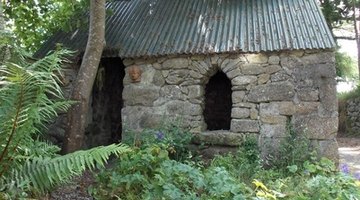Vermont Outhouse Regulations
An outhouse is a building containing a waterless toilet without internal plumbing facilities, which is situated adjacent to a dwelling house. Outhouses are convenient, cost-effective, on-site decentralized sewage systems for individual buildings or homes. They are significant in industrially and financially insecure Vermont villages in the face of soaring costs of centralized sewer management infrastructure construction.
History

In the early colonial era, Vermont riverbank settlement dwellers used outhouse pits for removal of human waste from the house. The waste was piped out into nearby water bodies. Despite inventions of indoor plumbing, flushes, central sewerage systems and waste treatment technology in large settlements in the late 20th century, outhouses continued to be popular in smaller settlements. This gave rise to Vermont Outhouse regulations during the 1900s.
Function
Vermont outhouse regulations are designed for preventing ground/surface drinking water pollution and related public health hazards. These rules control outhouse construction to reserve space for future installation of sub-surface waste disposal systems, curb unbearable odor and prevent unsightliness of local landscapes.
Applicability
Vermont outhouse regulations apply to single-family residential units, mobile homes and manufactured housing, whether newly constructed, renovated or repaired. Regulations also refer to seasonal camps, multifamily residences and industrial or commercial institutions.
Permit
Installation of an outhouse requires a minor permit, valid for two years, from a sewage officer. Such constructions should be designed by a Vermont certified Site B-technician or a Vermont certified engineer as per legal specifications. He will also submit the completion report to the sewage officer.
Sewage Disposal
You have to supplement an outhouse with a proper sewage disposal system, which you can install provided you have a disposal system construction permit with two years validity. The sewage officer must issue a certificate of compliance post-construction.
Leach Field Size
If the disposal unit of an outhouse is a septic tank rather than mound-system, its leach field size may be decreased legally by 35 percent, leaving sufficient expansion space to accommodate a conventional toilet in the future.
Distance From Wells
Disposal units and outhouses must be sited at least 200 feet from wells.
Construction Approval
As per the Vermont Environmental Protection Rules, the owner of land acquired through new subdivision --- sale, gift or lease --- under a permit can construct an outhouse without further approval of the state division. However, he needs a municipal ordinance approved by the health commissioner under the Vermont Health Regulations or by the Department of Environmental Conservation.
Legal Exemptions
To gain exemption from obtaining permits for new or first-time land subdivisions, the subdivided lot, not being a seasonal camp, must either have an existing outhouse at least 100 feet from the venue where a subsurface disposal system is likely to be sited in future. Alternatively, the outhouse should be 100 feet away from the legal property boundary.
Noncompliance
Noncompliance of Vermont outhouse regulations deliberately or unintentionally will invite a court obligation of a fine of a maximum of $500 for each offense and for each continuing day of default. The Board of Health's officers can implement demolition of noncompliant outhouses at the municipality's expense. The expense is recoverable from the owner through civil action.
References
Writer Bio
Norah Faith was born and raised in Texas and from there she has traveled nationally and internationally. After acquiring her teaching license from New Mexico State University, she found herself teaching ESL around the world. She continues to teach today and finds satisfaction writing for Demand Studios and other sites.
Photo Credits
- outhouse image by Robert Kelly from Fotolia.com
More Articles



